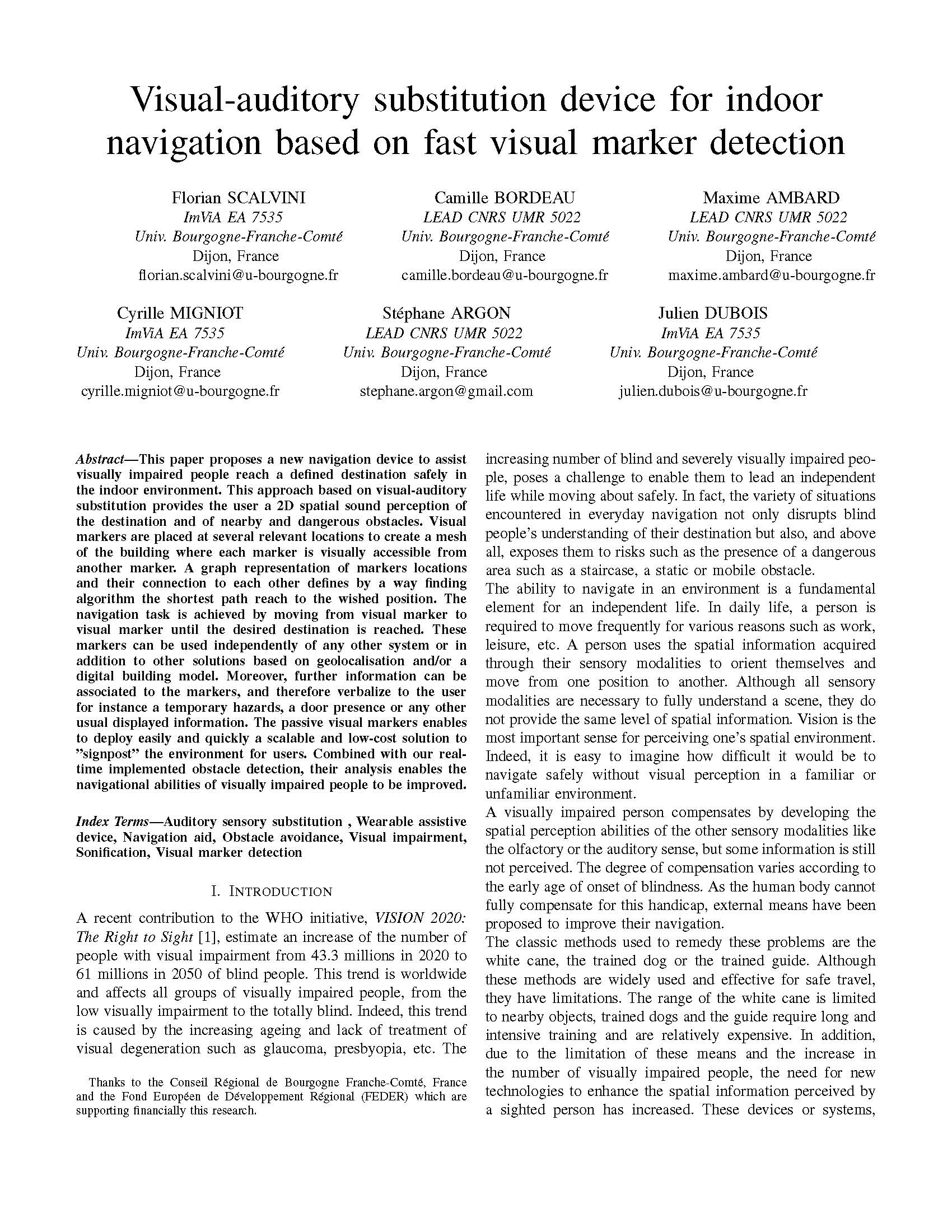This paper proposes a new navigation device to assist visually impaired people reach a defined destination safely in the indoor environment. This approach based on visual-auditory substitution provides the user a 2D spatial sound perception of the destination and of nearby and dangerous obstacles. Visual markers are placed at several relevant locations to create a mesh of the building where each marker is visually accessible from another marker. A graph representation of markers locations and their connection to each other defines by a way finding algorithm the shortest path reach to the wished position. The navigation task is achieved by moving from visual marker to visual marker until the desired destination is reached. These markers can be used independently of any other system or in addition to other solutions based on geolocalisation and/or a digital building model. Moreover, further information can be associated to the markers, and therefore verbalize to the user for instance a temporary hazards, a door presence or any other usual displayed information. The passive visual markers enables to deploy easily and quickly a scalable and low-cost solution to ”signpost” the environment for users. Combined with our realtime implemented obstacle detection, their analysis enables the navigational abilities of visually impaired people to be improved.
Visual-auditory substitution device for indoor navigation based on fast visual marker detection
